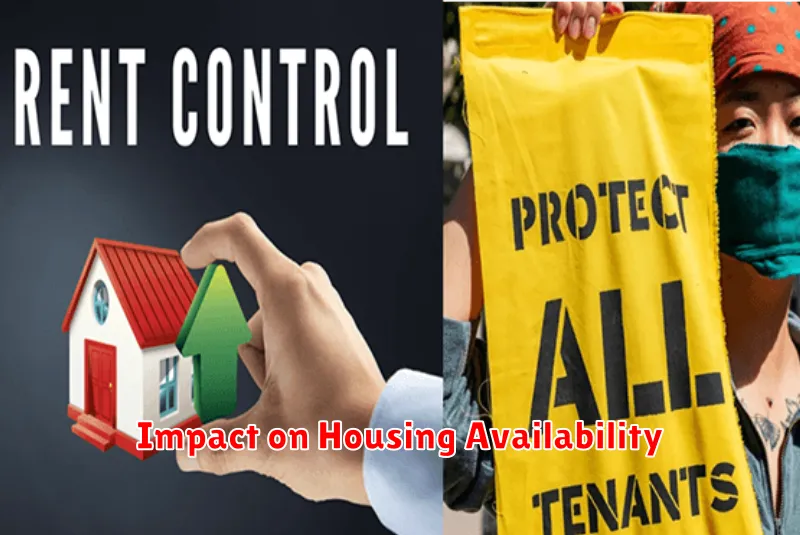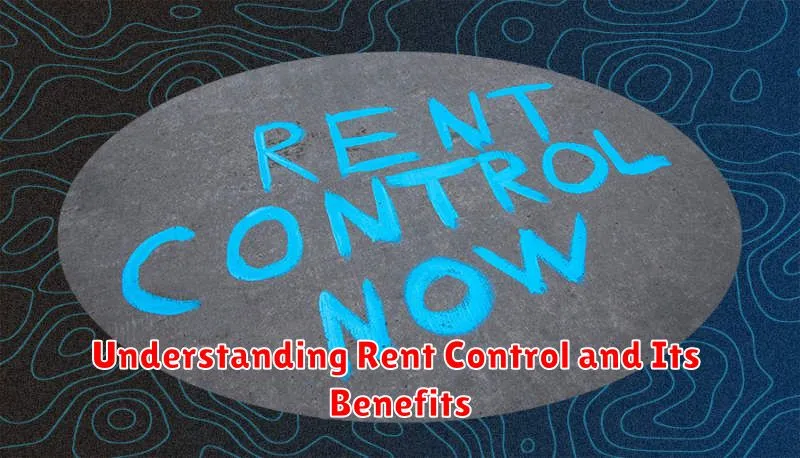Rent control is a complex and often debated topic in housing policy. It refers to government regulations that limit how much landlords can increase rent on residential properties. Understanding rent control and its potential benefits is crucial for both renters and landlords, as it significantly impacts the housing market. This article will explore the intricacies of rent control, examining its various forms and how it can provide housing stability and affordability for tenants, particularly in areas experiencing rapid rent increases or housing shortages.
While the potential benefits of rent control for tenants can be significant, understanding the nuances of these policies is essential. Rent control measures can take different forms, from strict limits on annual rent increases to vacancy decontrol, impacting how they affect both current and prospective residents. By exploring the specific mechanisms of rent control, we can better understand how it aims to achieve housing affordability, protect tenants from displacement, and contribute to more stable communities. This article will delve into these aspects, providing a comprehensive overview of rent control and its intended positive impacts on the rental market.
What Is Rent Control?
Rent control is a government regulation that limits how much landlords can increase rent on residential properties.
These regulations can take various forms, including limiting rent increases to a certain percentage each year, setting maximum allowable rents, or requiring landlords to justify rent increases to a regulatory body. The specific rules and regulations vary significantly depending on the jurisdiction.
Rent control aims to protect tenants from excessive rent increases, particularly in areas with high housing demand or limited housing supply. It is designed to ensure housing affordability and stability for residents.
How Rent Control Laws Work
Rent control laws typically limit how much landlords can increase rent on existing tenants. These laws don’t usually apply to new construction or vacant units. The specifics vary significantly by jurisdiction.
Maximum allowable increases are often tied to an index, such as the Consumer Price Index (CPI), or set at a fixed percentage. Some jurisdictions allow landlords to petition for larger increases under specific circumstances, like substantial renovations.
There are often exemptions to rent control laws. For instance, single-family homes or owner-occupied buildings with a small number of units might be exempt. Additionally, some jurisdictions allow landlords to reset rent to market rates when a tenant voluntarily vacates a unit.
Benefits for Tenants
Rent control primarily benefits tenants by providing housing stability. It limits how much and how often landlords can increase rent, making it easier for tenants to predict and manage their housing costs.
This predictability is particularly important for lower-income households and those on fixed incomes. It can prevent displacement and allow tenants to remain in their communities, even when rents in the surrounding area are rising rapidly.
Additionally, rent control can contribute to neighborhood stability by reducing tenant turnover. This helps create a stronger sense of community.
Limitations for Landlords

Rent control, while beneficial for tenants, can impose certain limitations on landlords. One significant restriction is the inability to freely raise rents. Regulations typically dictate permissible annual increases, often tied to a cost-of-living index. This can impact a landlord’s potential return on investment.
Furthermore, rent control can make it more difficult to evict tenants. Stringent regulations often require landlords to demonstrate just cause, which can be a lengthy and complex process. This can limit a landlord’s flexibility in managing their property.
Another potential limitation is decreased investment in property maintenance. With restricted income potential, some landlords may be less inclined to invest in upkeep and improvements, potentially leading to property deterioration.
Cities with Rent Control Policies
Several cities across the United States have implemented rent control policies, although the specific regulations vary significantly. These policies aim to protect tenants from exorbitant rent increases and maintain housing affordability. It’s important to note that state laws often influence the type and extent of local rent control measures.
Examples of cities with some form of rent control include:
- California: Several cities including Los Angeles, San Francisco, and Oakland have rent stabilization ordinances.
- New Jersey: Numerous municipalities, particularly in the northern part of the state, have local rent control policies.
- New York: New York City has a long history of rent regulation, including rent-stabilized apartments.
- Oregon: The state implemented a statewide rent control policy with certain limits on annual increases.
- Washington D.C.: Rent control measures exist in the District of Columbia.
This list is not exhaustive, and the specific regulations within each jurisdiction should be researched individually. The presence of rent control in a city doesn’t necessarily guarantee affordability, as other market factors also play a role.
Eligibility Criteria
Rent control ordinances typically have specific eligibility criteria that both tenants and properties must meet. Tenant eligibility often hinges on factors like income, household size, and the length of tenancy. Some ordinances prioritize senior citizens or individuals with disabilities.
Property eligibility is often determined by the age of the building, the number of units, and whether it’s exempt based on specific classifications (e.g., single-family homes, newer constructions). Understanding these criteria is crucial for determining whether rent control protections apply.
How Rent Increases Are Regulated
Rent increases are typically regulated through a combination of local ordinances and state laws. These regulations vary significantly from jurisdiction to jurisdiction. Some areas have no rent control whatsoever, leaving landlords free to increase rents as they see fit (within the terms of a lease). Other jurisdictions implement strict rent control measures, often limiting annual increases to a specific percentage tied to an index, like the Consumer Price Index (CPI).
Local rent control boards or similar entities are often responsible for overseeing these regulations and ensuring compliance. These boards may establish procedures for landlords to petition for larger increases under specific circumstances, such as substantial capital improvements to the property. Tenants often have the right to challenge proposed rent increases they believe are unfair or unlawful.
Challenges and Controversies
While rent control aims to provide affordable housing, it also faces significant challenges and generates considerable controversy.
One common criticism is that rent control can discourage new construction and reduce the quality of existing housing stock. Landlords may lack the financial incentive to build or maintain properties when rent increases are restricted.
Another concern is the potential for reduced housing availability. Rent control can create a shortage of units as demand exceeds supply, making it more difficult for people to find housing in regulated areas.
Finally, rent control can create inefficiencies in the market by hindering the natural adjustment of rents based on supply and demand. This can lead to misallocation of resources and unintended consequences.
Impact on Housing Availability

Rent control’s impact on housing availability is a complex and often debated topic. While it aims to make housing more affordable, it can sometimes lead to a decrease in the overall supply of rental units.
With lower potential returns, landlords may be less inclined to invest in new rental properties or maintain existing ones. This can lead to a stagnation in the housing supply, particularly in high-demand areas.
Additionally, rent control can discourage property owners from renting out units, potentially converting them to owner-occupied housing or other uses, further reducing the availability of rentals.
Should You Seek a Rent-Controlled Unit?
Securing a rent-controlled apartment can offer significant advantages, primarily predictable housing costs. This stability can be particularly appealing in volatile markets where rent increases are common. However, finding a rent-controlled unit can be challenging due to limited availability and high demand.
Weighing the pros and cons is crucial. If long-term stability is a priority and you’re prepared to potentially navigate a waitlist or face stricter eligibility requirements, pursuing a rent-controlled unit might be worthwhile. However, if flexibility is key and you anticipate needing to move frequently, the limitations might outweigh the benefits.

